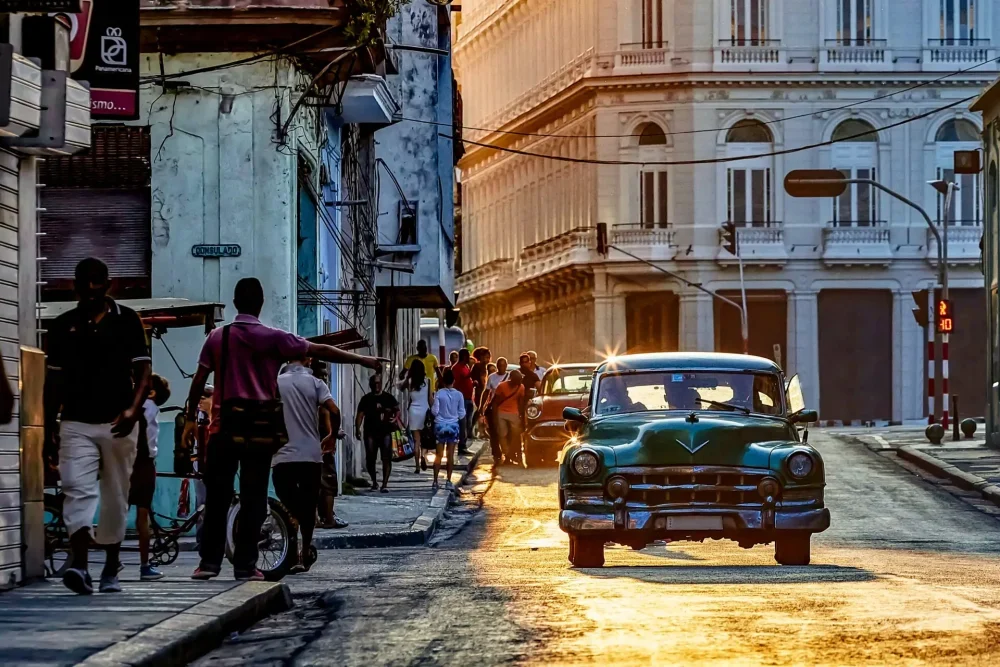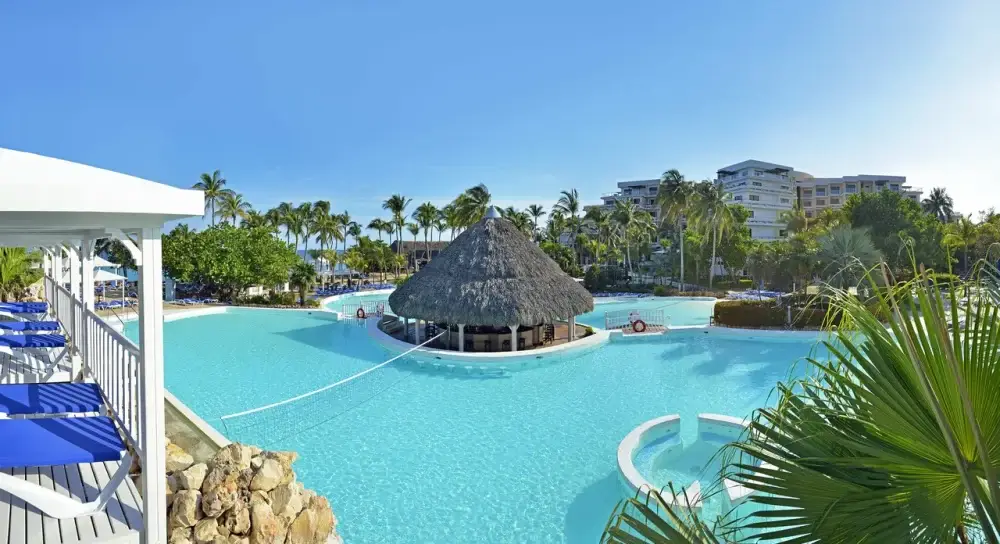A trip to Cuba is incomplete without a visit to the Cuban Riviera — one of the most picturesque resorts in the Caribbean region. This peninsula, about 20 kilometers long, extends into the Atlantic Ocean and combines natural beauty, a relaxed atmosphere, and cultural highlights. The answer to the question “what to see in Varadero” is not limited to just the beach — here you can explore underground caves, delve into the heart of valleys, touch the history of rum, and feel the pulse of life on the main street.
Beaches — sandy perfection with a Caribbean character
When it comes to what to see in Varadero, the famous beaches are a top priority. Along the coast, there are numerous hotels where you can rent a sun lounger or order a cocktail at a bar overlooking the ocean. And for those seeking romance, a sunrise on the beach can be a true revelation: silence, golden light, and the endless expanse of the Caribbean Sea.

The wide shoreline with fine coral sand and transparent water makes relaxation here truly heavenly. The coastline is lined with palm trees, providing shade to relax under after swimming in the warm waves. Varadero beaches are perfect for snorkeling, kayaking, and strolling along the ocean’s edge.
Avenida Primera — the main artery of the coastal resort
The central street of the resort, Avenida Primera, runs almost the entire length of the peninsula. Here you will find cafes, shops, art stores, souvenir kiosks, as well as nightclubs and restaurants. Tourists stroll along the palm-lined avenue, taste traditional dishes, listen to live music, and enjoy the rhythm of Cuban life.
A walk along the central street of Varadero allows you to experience the atmosphere of local hospitality and cultural diversity. In the evening, it becomes particularly lively, and local vendors offer handmade goods and aromatic coffee.
House of Rum — museum and tasting in one
What to see in Varadero? One of the must-visit places is the House of Rum. It’s hard to imagine a trip to Cuba without getting acquainted with the legendary drink, and here it’s not just a shop, but a mini-museum. Visitors are introduced to the distillation traditions, types of rum, its history, offered tastings, and taught how to distinguish aged liquor from young ones. It’s a great opportunity not only to taste but also to take a part of Cuban culture home with you.
This place is interesting not only for alcohol enthusiasts but also for those who want to immerse themselves in the country’s culture through its iconic symbols. The House of Rum is often included in city tours.
Saturn Cave — underground lake and mysterious silence
One of the most unusual attractions in Varadero is the Saturn Cave, located near the center. The underground lake with transparent water is surrounded by stalactites, and in its depths, there are whimsical forms created by nature over hundreds of years.
Tourists can not only descend inside and admire the scenery but also bathe in the cool water. The descent into the cave turns into a true ritual of unity with nature. The location is especially popular among divers, who discover underwater galleries.
Ambrosio Cave — a journey to ancient roots
Near the Saturn Cave is the Ambrosio Cave, where pre-Hispanic rock paintings have been preserved. The images, drawn in charcoal, depict animals, symbols, and abstract forms. It is believed that the cave served as a sacred place for the indigenous peoples of Cuba. The uniqueness of the location makes it a must-visit in Varadero for history and cultural enthusiasts.
For a tourist, it’s not just a natural site but a cultural bridge through time. A walk through the dark tunnels is accompanied by a gentle coolness, and the images on the walls create a sense of connection to a vanished civilization.
The site is included in key stops on guided tours and is suitable for both adults and children.
Viñales Valley — the living heart of Cuban nature
Although the Viñales Valley is not located directly on the coast, it is included in many tourist programs as a vibrant addition to seaside relaxation. The journey here takes a few hours, but the views justify the trip: picturesque hills covered with greenery, tobacco plantations, and farmers’ houses create a scene that seems to have come from a painter’s canvas.
Here you can see how tobacco is grown, try natural cigars, visit restaurants serving dishes based on ancient recipes. Nature and traditions converge in the valley, creating a unique atmosphere — one of the reasons to include it in the list of what to see in Varadero if you want to experience the real Cuba beyond the beaches.
Josone Park — a quiet corner of greenery
In the heart of Varadero resort is Josone Park — a place of tranquility and coolness under the shade of trees. It is suitable for those who want to rest from the sun, noise, and activity. Inside, there is an artificial lake, bridges, ducks, well-kept alleys, and a cozy cafe.
People come here with children, read books, have picnics. The park is integrated into the city’s structure and adds coziness to the resort. Among Varadero’s attractions, Josone stands out for its intimacy and the opportunity to relax away from the hustle and bustle.
Useful tips for travelers
Traveling to Cuba requires preparation, especially regarding currency, transportation, and logistics. Below are recommendations for a comfortable stay:
- exchange currency in advance, preferably in euros or dollars;
- book excursions through the hotel or an official guide;
- avoid raw foods and drink bottled water;
- install an offline map for city orientation;
- don’t forget sunscreen — the sun is scorching even in the shade.
If you plan to visit the tourist capital of the island, make sure to plan your itinerary in advance — knowing what to see in Varadero before your trip simplifies planning and helps you not miss the best beaches, natural parks, and atmospheric local spots!

What to see in Varadero: conclusions
The question “what to see in Varadero” has dozens of answers, and each of them is worth attention. The resort offers not only the beach but also unique natural sites, underground caves, cultural attractions, and gastronomic delights.
A traveler exploring Cuba’s main resort gets more than just oceanfront relaxation — they come into contact with Cuba in all its complexity: natural, historical, emotional. It’s worth staying longer here to see not only the shores but also the depth.
 en
en  ar
ar  de
de  es
es  fr
fr  nl
nl  hi
hi  it
it  pt
pt  el
el 



